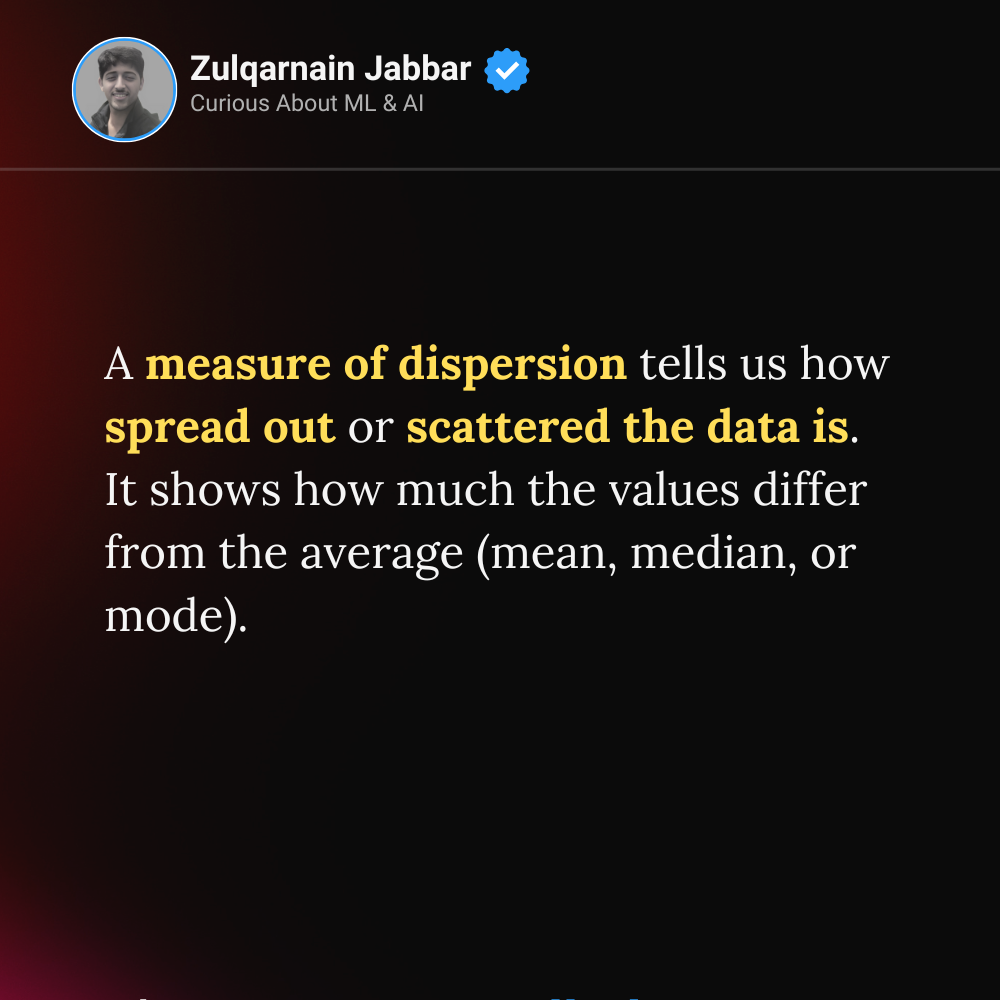Measure Of Dispersion

A measure of dispersion tells us how spread out or scattered the data is. It shows how much the values differ from the average (mean, median, or mode).#MachineLearning #Statistics #Math #Zulqai pic.twitter.com/Sm3lzF2tt9
— Zulqarnain Jabbar (@Zulq_ai) March 30, 2025
A measure of dispersion tells us how spread out or scattered the data is. It shows how much the values differ from the average (mean, median, or mode).
Common Measures of Dispersion:
- Range → Difference between the highest and lowest value.
- Example: If scores are 10, 20, 30, 40, then Range = 40 – 10 = 30
- Variance → The average squared difference from the mean.
- Standard Deviation → The square root of variance, tells how far values are from the mean.
- Interquartile Range (IQR) → Spread of the middle 50% of the data (difference between Q3 and Q1).
Why is it Important?
- Helps understand data consistency
- Used in finance, statistics, and AI to measure risk and variability


